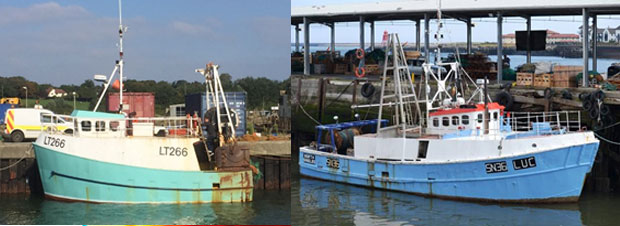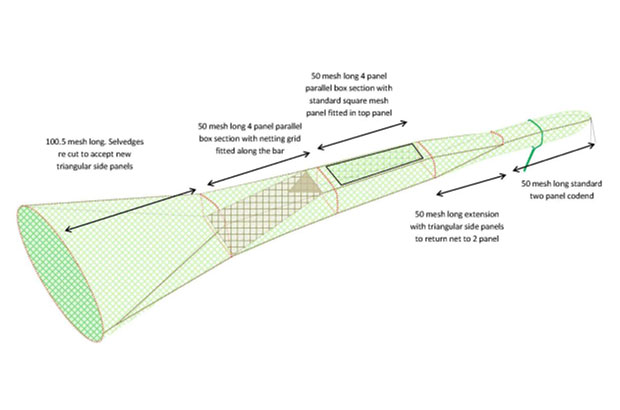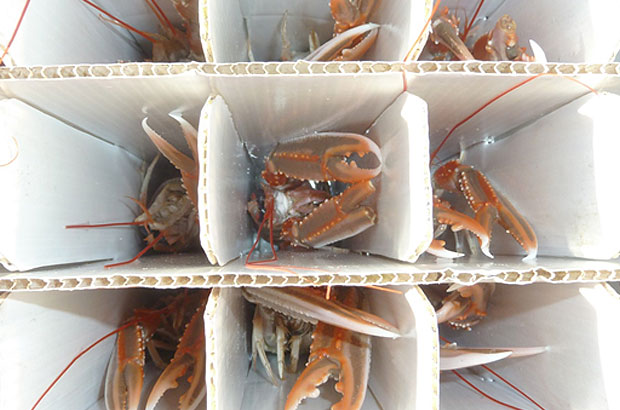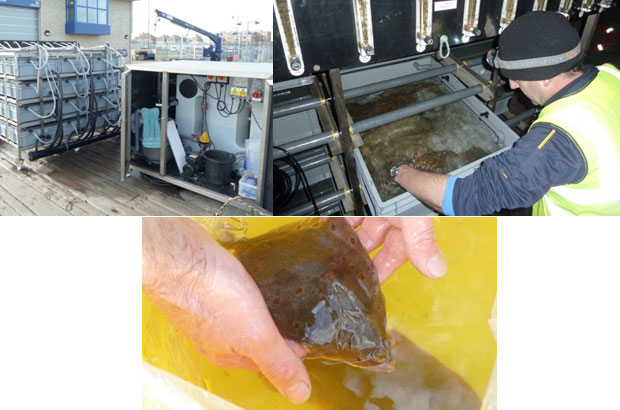Senior Cefas scientist Tom Catchpole explains why fish are discarded back to the sea, and what happens to them.
Scientific evidence needed
Discarding fish back to the sea is considered to be wasteful as many species are returned dead or dying. On 1st January 2014, the latest reform of the EU Common Fisheries Policy (CFP) came into force and with it a discard ban (or landing obligation). The discard ban is being phased in and will cover all quota stocks in EU waters by January 2019.
However research has shown that some discarded fish survive and that in some cases, the proportion of discarded fish that survive can be substantial. Therefore the new policy includes the possibility of exemptions from the discard ban for:
… species for which scientific evidence demonstrates high survival rates, taking into account the characteristics of the gear, of the fishing practices and of the ecosystem …
In these cases it may be beneficial to return catches to the sea to support the stock biomass and the profitability of the fishing industry.
There are some estimated survival rates for discarded fish, but the results vary a lot and they are available for only a few species and fisheries. Many factors, including biological, environmental and technical elements of the capture process), have been identified as affecting the survival of discarded species. For example, when the condition of fish is not at its best after spawning or when the duration of fishing tows is longer you can expect that survival levels will be lower.
But more scientific evidence on fishery discard survival rates is needed to consider the specific characteristics of the gear and fishing practices. This evidence will be reviewed by fishery managers and can be used to support exemptions from the landing obligation where it is believed that survival is sufficiently high.
What is Cefas doing?
In 2015, I led a team of Cefas scientists to complete a Defra funded study on the survival of discarded plaice in four English fisheries (SW beam and otter trawl, SE gill net and NE otter trawl). This work used the methods that were developed by an ICES (International Council for the Exploration of the Sea). The need for developing guidance to estimate discard survival was requested by the EU Commission following CFP reform and meant a new group of experts was created to produce guidelines.
However, we need further evidence to understand discard survival and in 2016, with funding from Defra, our team are continuing work to look at new species and fisheries. Currently we are investigating:
- The survival of Nephrops caught by highly selective Nephrops trawls (principle investigator Frank Armstrong).
- the survival of discarded sole (Solea solea) caught by inshore trawlers working from the east coast of England (principle investigator Ana Ribeiro Santos);
- the survival of plaice caught by trawlers targeting Nephrops (scampi – Nephrops norvegicus) in the North Sea (principle investigator Peter Randall);

What does our latest research reveal?
Survival of released Nephrops caught by highly selective Nephrops trawl
There has been a series of projects working with the fishermen on the English northeast coast to develop trawls that avoid catching unwanted fish. One such design developed by Cefas and local skippers is the Netgrid.
The objective of this work was to develop a trawl that reduces catches of cod in the English NE coast Nephrops trawl fishery without losing the target species of Nephrops. The Netgrid is a trawl into which an inclined sheet of netting is laced on the inside to act as a barrier to the fish. In front of netting grid at the top of the trawl is a fish escape hole. The netting grid acts as a barrier and guides fish out of the escape-hole while Nephrops pass through the netting to the cod end.
The Netgrid trawl demonstrated a catch of cod that was less than 5% of total catch, equating to a 75% reduction in the weight of cod compared with a normal trawl. The design showed that cod catches can be reduced whilst not losing any catches of Nephrops. Overall discards of fish were reduced by up to 63% when using the Netgrid This design has now been approved as a highly selective gear. Modifications, like this one, can be of practical and economic benefit to the industry when operating under the discard ban.

The next step has been to see whether unwanted Nephrops survive when caught and released from this trawl design. Working with Nephrops in survival investigations is the latest challenge for the Cefas team, as so far we have been investigating the survival of fish. Therefore, before we could bring in samples of Nephrops from the trawlers, we needed to be sure that we could keep healthy Nephrops alive in our modified mobile aquaria.
We have sourced some creel caught Nephrops from Blyth Fish to test our systems, and we have managed to keep >90% alive for more than 10 days. This is the level of survival that we would expect assuming that our aquaria were not harming the Nephrops. The next stage is to collect some trawl caught Nephrops.

Survival of inshore trawl caught (Dover) sole
All of the field trials for investigating sole survival in the inshore east coast trawl fishery are now complete and we have analysed the data and presented it to Defra. We have monitored 287 sole in our mobile aquaria and recorded the fatalities, and we have assessed the health of a further 1575 sole in the catch so that we can estimate the level of survival for all of the observed hauls. The results are being reviewed and will guide Defra in deciding whether they show sufficiently high survival to warrant and exemption from the discard ban.

Survival of plaice caught by Nephrops trawlers
For the plaice survival work we have the last batch of fish in our purpose made mobile aquaria. We will keep these fish for approximately 10 days until we are sure that we have observed all of the deaths that would have occurred due to the fish being caught and discarded. These results will be combined with some from last season and presented to Defra to guide decisions on exemptions from the discard ban.

From research to recommendations
The results and evidence generated from these projects will be used immediately in policy decisions. The estimated survival levels will be reviewed by Defra and fisheries ministries from other EU countries, and they will decide whether the survival is sufficiently high to propose an exemption from the discard ban.
These decisions will be included in the regional discard plans agreed by the countries in each region, which will then be assessed by the EU Commission, before being passed into EU law. For the discard plans to be adopted for 2017, the supporting evidence must be available by May 2016, so we are working hard to make sure the evidence they need is provided in time for the fishery managers to make decisions that will help the fishing industry.
We have also started the process of looking at which species and fisheries we need to focus on next. So if you have ideas about where more information is needed then please get in touch.
For updates please sign up to email alerts from this blog, email me or you can follow us on Twitter @CefasGovUK.
1 comment
Comment by Mogens SCHOU posted on
These investigations are valuable in terms of understanding the contexts and managing the actual fishing. The results should however not be used to establish detailled prescriptive conditions for allowing fish to be returned to the sea. Rather define very simple conditions and ensure that the fisher has an incentive to avoid discard - for example by requiring the fisher to count all catches fully or with and average mortality rate against quotas. His incentive to discard is thereby removed/reduced